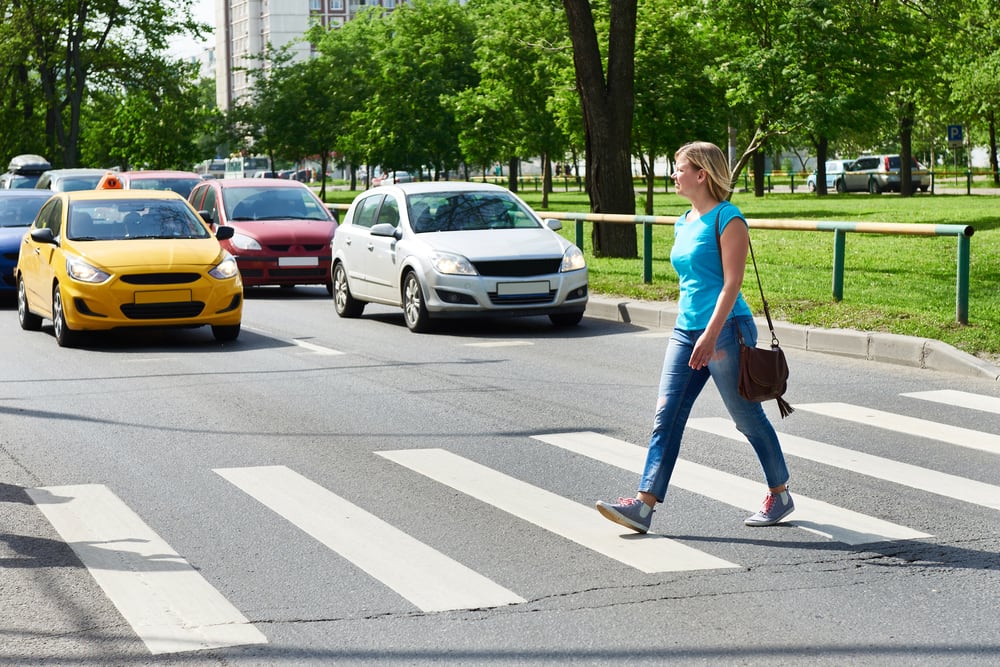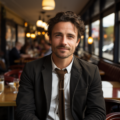Right-of-way violations are a common yet overlooked cause of accidents on California roads. Understanding who has the right of way in roundabouts, intersections, and highways can help prevent crashes and protect all road users.
Imagine you’re driving through downtown Los Angeles when you reach a four-way stop. Just as you begin to move forward, another driver speeds through without stopping.
This kind of reckless decision-making leads to thousands of accidents every year in California. In this case, Arash Law can serve you for a speedy financial and medical recovery.
In this article, we’ll break down the most common right-of-way violations, their consequences, and how to avoid them.
Understanding Right-of-Way Laws in California

Right-of-way laws dictate who must yield in traffic situations, ensuring smooth and safe road use. Governed by the California Vehicle Code, these laws apply to:
- Pedestrians at crosswalks – Vehicles must yield to pedestrians in marked and unmarked crosswalks.
- Intersections and four-way stop – The first vehicle to arrive has priority; in ties, the driver to the right proceeds first.
- Merging and lane changes – Drivers entering a highway must yield to traffic already on it.
- Cyclists on bike lanes – Motorists must check for and yield to cyclists before turning or merging.
Picture yourself on Sunset Boulevard in Hollywood. You’re waiting at a crosswalk, but a driver, distracted by their phone, breezes right through without slowing down. Pedestrian right-of-way violations like this can be deadly, especially in busy urban areas. Understanding these rules helps reduce accident risks and legal liability for drivers.
Common Right-of-Way Violations and Their Consequences
Right-of-way violations are a leading cause of collisions, injuries, and legal disputes on California roads. While some drivers make honest mistakes, others disregard traffic laws, putting themselves and others at serious risk.
Let’s look at the most common right-of-way violations and how they can lead to serious accidents.
Failing to Yield at Stop Signs & Intersections
Intersections are one of the most common locations for right-of-way disputes. Many drivers either fail to recognize who has the right of way or intentionally rush through four-way stops, increasing the risk of dangerous side-impact collisions.
Imagine a driver approaching a stop sign, assuming the other vehicle will slow down, and turning without yielding. This kind of miscalculation can result in a serious collision, leading to property damage, injuries, and legal consequences, including liability for medical bills and compensation claims.
Ignoring Pedestrians’ Right of Way
Crosswalks exist to protect pedestrians, but drivers failing to yield (whether due to distraction, impatience, or negligence) often create life-threatening situations. California law requires vehicles to stop for pedestrians at both marked and unmarked crosswalks, yet violations remain common.
For instance, a driver speeding through an intersection might fail to notice a pedestrian already crossing. The pedestrian is forced to jump back to safety or, in worse cases, is struck by the vehicle. These incidents can lead to severe injuries, lawsuits, and potential criminal charges if negligence is proven.
Not Yielding to Cyclists
Cyclists are particularly vulnerable on the road, especially when drivers fail to check bike lanes before making turns. California law grants cyclists many of the same rights as drivers, but that doesn’t always translate to safe road behavior.
A common scenario involves a driver making a right turn without checking their mirrors, unaware that a cyclist is traveling straight in the bike lane. The sudden turn can result in a direct collision, causing serious injuries that require extensive medical care. Such cases often lead to personal injury claims, as the driver may be found liable for failing to yield properly.
Merging or Changing Lanes Without Yielding
Lane merging can be one of the most dangerous maneuvers on highways, particularly when aggressive drivers force their way in without yielding. Merging safely requires checking blind spots, signaling properly, and waiting for a clear opening—steps that impatient drivers often ignore.
Modern advancements like Blind Spot Information (BSI) technology help address this issue by detecting vehicles in adjacent lanes and providing visual or audible alerts when a lane change is unsafe. However, relying solely on technology is not enough. Drivers must still check mirrors, signal properly, and ensure a lane is clear before merging.
Imagine a driver weaving through traffic and cutting in front of another vehicle at high speed. This sudden move forces the other driver to slam on the brakes, causing a rear-end collision or even a multi-car pileup. In such cases, the driver who failed to yield is often held responsible for damages, including medical expenses and repair costs.
Running Red Lights or Failing to Yield on Left Turns
Making mistakes in timing an intersection, particularly when turning left, can result in devastating collisions. Many drivers attempt to beat the light, failing to account for the speed of oncoming traffic.
A common example is a driver making a quick left turn on a yellow light, assuming the oncoming car will slow down. Instead, the two vehicles collide, resulting in extensive injuries and vehicle damage. Such reckless maneuvers can lead to insurance disputes, personal injury lawsuits, and even criminal charges if serious harm occurs.
Ways To Spot And Prevent Right-of-Way Accidents

Recognizing right-of-way violations on the road can help avoid accidents. These are common in:
- Intersections: Watch for drivers who fail to stop or cut in front of other vehicles.
- Crosswalks: Pay attention to vehicles that don’t slow down for pedestrians.
- Merging lanes: Be cautious of aggressive drivers forcing their way into traffic.
- Bike lanes: Look for turning vehicles that don’t check for cyclists.
Avoiding violations isn’t just about following the law—it’s about protecting yourself and others. Even if you have the right of way, always anticipate that other drivers may not follow the rules. Staying alert can prevent a crash before it happens. You must:
- Approach intersections with caution.
- Watch out for pedestrians and cyclists.
- Use turn signals and check blind spots.
- Recognize local traffic signs and signals.
- Yield when in doubt.
Since many right-of-way violations stem from a lack of awareness rather than intentional recklessness, driver education programs play a crucial role in improving road safety. Here are some valuable resources that help educate drivers:
- California Department of Motor Vehicles (DMV) Driver Training Schools: The DMV provides a comprehensive list of licensed driving schools offering both classroom and behind-the-wheel instruction. These programs cover traffic laws, road safety, and driver responsibilities.
- Go Safely, California: This initiative offers year-round education campaigns, resources, and tips to help the public make informed choices about road safety, emphasizing the shared responsibility of drivers, bicyclists, and pedestrians.
- California Highway Patrol (CHP) Safety Programs: The CHP implements programs focusing on pedestrian and bicyclist safety, aiming to educate the public and enforce traffic safety laws to protect all road users.
What to Do If You’re Involved in a Right-of-Way Accident
If another driver fails to yield and causes an accident, take these steps:
- Call 911 – Cooperate with the police and paramedics when they arrive at the scene.
- Seek Medical Attention – If you get into an accident involving right-of-way violations, get immediate medical assistance. Even if injuries seem minor, some serious conditions may not show symptoms until later.
- Gather Evidence – Take photos, videos, and witness statements to document the violation.
- Report the Incident – File a police report and contact your insurance provider. Avoid admitting fault, as liability may not be immediately clear. Instead, stick to the facts when speaking to police and insurance providers.
- Consult a Personal Injury Lawyer – A legal expert can help recover compensation for medical bills, lost wages, and damages.
Drive Smart, Stay Safe
Right-of-way laws are designed to keep roads safe, but they only work when drivers follow them. Neglecting these rules can result in severe injuries, costly legal battles, and lifelong consequences. Every driver plays a role in road safety. By staying alert and respecting right-of-way laws, we can prevent accidents and keep California roads safer for everyone.


